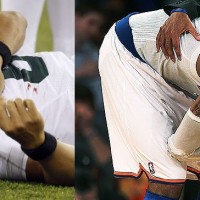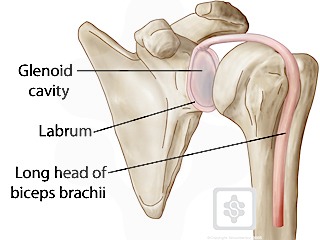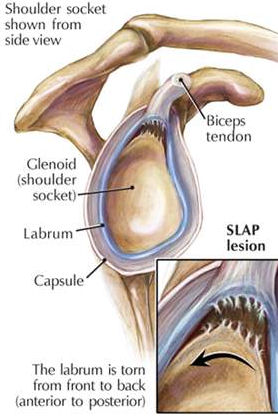Carmelo Anthony, Mark Sanchez, and the Shoulder Labrum Injury Epidemic

by Stephen Caronia
It’s been a bad year for labrums of New York athletes.
Back on April 14th, Carmelo Anthony of the Knicks injured his left shoulder in a game against the Indiana Pacers. Turned out he sustained a torn labrum and rotator cuff, but he toughed it out and played through the injury despite aggravating it during the playoffs. During the offseason, he opted to avoid surgery and utilize conservative management. He says that despite taking a “huge risk” by not having surgery, he’s “ecstatic going from a torn rotator cuff and torn labrum to not needing surgery.”
In a stroke of simultaneous coaching stupidity and serendipity, Mark Sanchez sustained a shoulder injury during a meaningless series in the fourth quarter of the Jets penultimate preseason game in August. Word on the street was that he too tore his labrum, and after several weeks of attempted rehab it was decided by Dr. James Andrews that surgery was necessary. After undergoing the procedure on October 8th, Sanchez will spend the year on the sidelines holding a clipboard in one hand and doing rotator cuff strengthening exercises in the other.
Here’s a brief description of what the labrum is and how it can get damaged.
The shoulder is, structurally speaking, not that stable. It’s a ball and socket joint, but the ball is much rounder than the socket leading to a less than optimal fit. This means that we rely on other structures to hold everything together even more so than other joints. I spoke a bit about this when Johann Santana tore the capsule in his shoulder: muscles, ligaments, cartilage, and other connective tissue are imperative to maintaining a stable shoulder joint. This allows for greater mobility at the cost of stability.
The labrum is a ring of cartilage (think calamari) that surrounds the socket of the shoulder joint. Its role is to aid in stabilizing the shoulder by deepening the socket – that is – to make the ball fit better. It connects to the joint capsule/ligaments (the one that Santana shredded) and the bicep tendon and creates sort of a suction cup that helps keep everything from flopping around all over the place.
There are many variations in how the labrum can tear and exactly what happens structurally, and they are named for the involvement of the bicep tendon and the location of the tear using the numbers on a clock. One of the most common ways to tear the labrum is to have a large force pull abruptly on the bicep tendon, effectively yanking the part where the labrum attaches right off (this is usually called a SLAP tear [Superior Labrum Anterior to Posterior]). Labral tears are fairly common sports injuries overall and downright ubiquitous in Major League Baseball pitchers (in fact, many pitchers without any symptoms at all have labral tears). In basketball and football players, they are less common but typically happen when there is some sort of impact to the shoulder or arm while the arm is in a bit of an awkward position.
It appears that Anthony had his worst aggravation of the injury when Kevin Garnett gave his arm a little tug during game 5 of last year’s opening round of the NBA playoffs: as the arm is pulled, the bicep pulls back and a force is applied to the labrum itself. In Anthony’s case, his labrum was probably a little damaged at that point and responded poorly.
As for Sanchez, he suffered a fall on his arm while it was in an awkward position. This causes a simultaneous grinding, twisting, and pulling forces on the labrum. Needless to say, it doesn’t like that.
Anthony avoided surgery because the severity of his tear was probably significantly less than that of Sanchez’s. Hopefully, Anthony’s shoulder will hold up all year: labral tears usually don’t heal. Cartilage in general has very poor blood supply, meaning that all of the goodies needed for tissue healing don’t make it there (this is why people are going to Europe to have stem cell based treatments on their worn down knees, as cartilage damage is a factor with that too). Anthony will have to hope the tear was small enough and in a good location (towards the outer rim of the labrum).
As for Sanchez, Dr. Andrews anchored the torn part of the labrum back to the rim of the socket of the joint, cleaned any debris from other tissues, and sewed him back up. He’ll be in a sling for a few weeks and have restricted motion to make sure he doesn’t undo the repair. He’ll progress to full motion and work on regaining strength. He should be back to start next year.
Unfortunately, he’ll probably still be holding a clipboard. He’ll just be in another uniform and without a sling.
Tweet
Share


